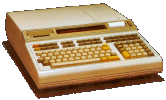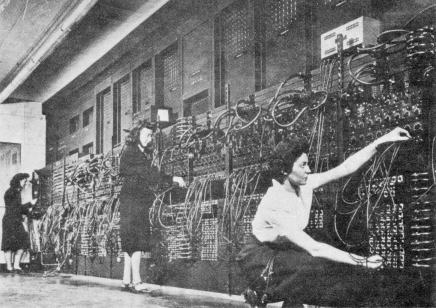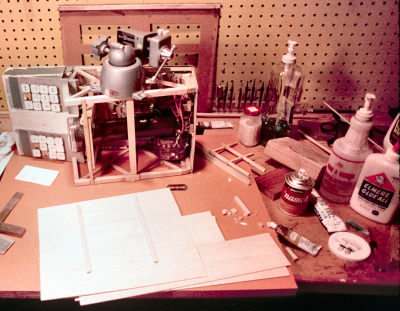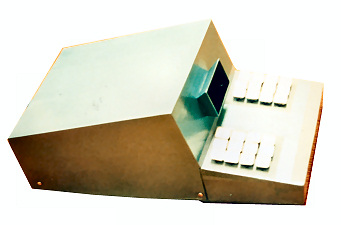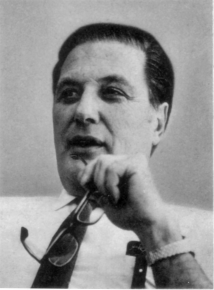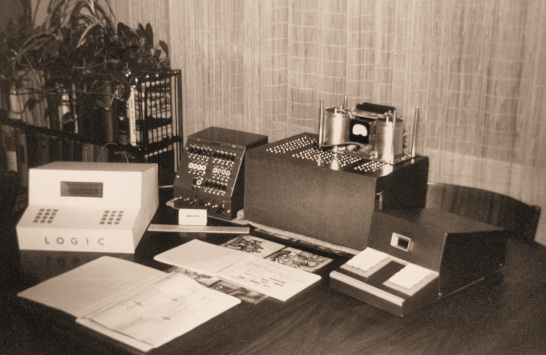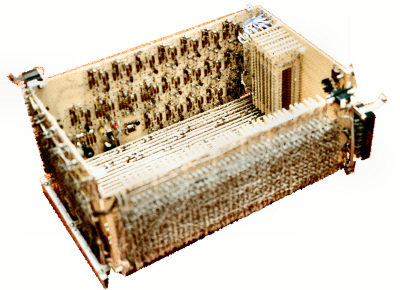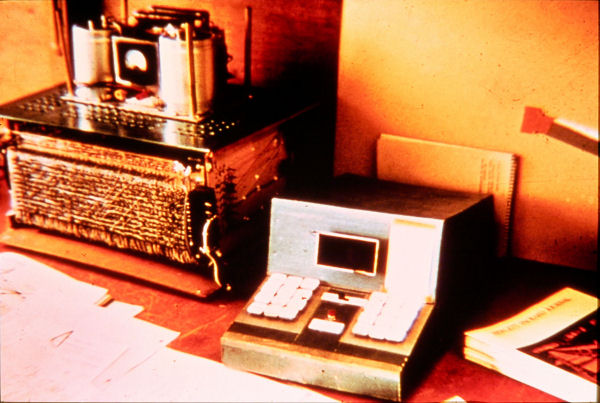|
|||||||||||||||||||||||||
|
|
|
Revised 2/21/04 |
||||||||||||||||||||||||||||||||||||||||||||||||||||||||||||||||||||||||||||||||||||||||||||||||||||||||||||||||||
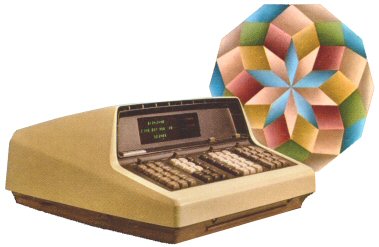 |
||||||||||||||||||||||||||||||||||||||||||||||||||||||||||||||||||||||||||||||||||||||||||||||||||||||||||||||||||
|
|
||||||||||||||||||||||||||||||||||||||||||||||||||||||||||||||||||||||||||||||||||||||||||||||||||||||||||||||||||
|
The HP 9100: The Initial Journey
In the early 1960s, electronic calculators started to appear from companies such as Friden, Sharp, Wang, Mathatronics, IME, and Olympia. These early machines were designed as electronic analogs of the mechanical calculators that preceded them—performing addition, subtraction, multiplication, and division but not transcendental functions. However, even though they performed the same functions as mechanical calculators and no more, electronic calculators were both faster and quieter than the mechanical versions so the marketplace rapidly adopted the new machines. The Smith Corona Company, a leading typewriter manufacturer, had acquired Marchant in 1958 as part of a plan to expand from typewriters into a full line of office equipment. It marketed the Marchant mechanical calculators under the brand name “Smith-Corona Marchant” until 1962 when the entire company adopted that name (or SCM for short). SCM realized it needed an electronic calculator too, or it would shortly cede the calculator market to its competitors. The company engaged Stan Frankel for this project in 1963 and either licensed an existing design or had him create a new design for the new calculator. Frankel’s design became the SCM Cogito 240SR, which went into production by early 1966.
SCM needed to reduce the design’s manufacturing cost and one of the ways it planned to do so was to buy off-spec diodes for manufacturing the calculator. Frankel’s calculator design used a lot of diodes, which normally cost about 25 cents each. SCM’s bean counters had calculated that they could only afford to spend 5 cents per diode if they were to meet cost targets for the calculator. The off-spec parts were one way SCM planned to reach this cost target. Osborne studied Frankel’s calculator design and SCM’s production plan for a while. He then decided that the design and the production plan weren’t very good. They would either produce a machine that didn’t work at all, or one that would operate very slowly. Osborne also decided that he didn’t want to work on the Cogito 240SR project at all. In fact, he now wanted to develop a calculator design on his own and he proposed this idea to SCM’s management. SCM weighed the credentials of the freshly minted MSEE from Berkeley against the seasoned veteran from the Manhattan project and unsurprisingly decided to bet on the veteran. At this point, Osborne decided to leave SCM. As is often the case in issues concerning intellectual property, things turned very ugly, very quickly. SCM demanded all of Osborne’s notes and papers, which he turned over to SCM. Then SCM’s attorneys demanded that Osborne give them his calculator design, which did not yet exist. SCM had concluded that Osborne could not possibly be confident enough to propose his “can’t lose” deal for the design of a calculator unless he’d already designed one. When Osborne insisted that he hadn’t designed the calculator yet, SCM’s lawyers become even more adamant. Osborne finally hired an attorney of his own who managed to dispatch SCM’s lawyers with one well-written letter, leaving Osborne free to develop his design.
Osborne used advanced, digital, finite-state-machine design (which he later named Algorithmic State Machine design or ASM) that he had learned and then greatly extended at UC Berkeley. He developed a 64-bit, microprogrammed processor with operating characteristics that would not be duplicated in a microprocessor for another 30 years or so. He then built a prototype calculator, housed it in a hand-built balsa-wood case, and painted it metallic Cadillac green. He finished the prototype on Chrismas Eve, 1964 and then Tom Osborne went out into the world to find a buyer for his brainchild.
The CORDIC Algorithm Long before Tom Osborne graduated from Berkeley with his MSEE, people started devoting considerable effort to figuring out how to perform complex engineering calculations on digital computers. One of these people was Jack E. Volder. While working for Convair’s Aeroelectrics Group in Fort Worth, Texas on navigation calculations in 1956, Volder published an internal report on his work titled “Binary computation algorithms for coordinate rotation and function generation.” This was the first publication of Volder’s development of the CORDIC (COordinate Rotation DIgital Computer) algorithm, which computes trigonometric functions (such as sine and cosine) using iterative repetitions of shifts and adds. Digital circuits can easily perform shifts and adds at very high speeds so Volder’s algorithms really opened the world of trigonometric computation to electronic computers. Volder solidified his work in 1959 by publishing two comprehensive disclosures of his work in IRE (Institute of Radio Engineers) publications. A physicist named Malcolm Macmillan realized that Volder’s CORDIC algorithm held promise as a foundation for a scientific calculator. Macmillan, who was in Los Angeles at the time, developed a prototype calculator with Volder based on Volder’s CORDIC algorithm. Then Macmillan went out to find a buyer for his design. One of the companies he visited on his quest was HP in Palo Alto. Barney Oliver and Paul Stoft met with Macmillan in June of 1965. Stoft had developed the specifications for HP’s 2116A minicomputer with Kay Magleby at HP’s Dymec division in 1964. In June of 1965, Magleby was off developing that minicomputer at what would become HP’s Cupertino Division. Stoft stayed in HP’s corporate R&D lab with Oliver. Beehive Hardware Design
Oliver and Stoft realized that Macmillan’s hardware design was not very advanced and was unlikely to produce a marketable product. However, the CORDIC algorithm implemented in Macmillan’s box represented a real computational breakthrough. Without a good hardware design, Macmillan merely had a brilliant idea in search of an equally brilliant implementation technology. Enter Tom Osborne and his Green Machine made of balsa wood. During the first six months of 1965, Osborne had tried to visit a long list of about 30 companies that made calculators and computing equipment including Friden, Monroe, Honeywell, and IBM. He wrote directly to the presidents of those companies in an attempt to set up meetings. At first, he had quite a bit of difficulty getting the attention of these companies. SCM expressed interest, but Osborne had no interest in working with his former employer after his experience with SCM’s lawyers. Osborne bought one share of IBM stock, attended a stockholder’s meeting in California, and asked Thomas Watson if IBM planned to get into the calculator business. Watson replied that IBM didn’t plan to get into the calculator business because the sale of just two IBM 709 mainframes represented about the same level of business that IBM expected it would get from the calculator market. (Industry legend also attributes an early prediction that the world would need no more than four or five mainframes, maximum, to Watson.) Osborne then asked if IBM might reconsider and Watson said that it was possible because IBM was always reviewing its business decisions. After the shareholder meeting, Osborne wrote to Watson. His letter recalled the words Watson had said at the shareholder’s meeting and then asked for a meeting to demonstrate his calculator. No deal, but a good NDA Osborne got no deal from IBM but he did get a meeting and a prototype non-disclosure agreement (NDA) that worked well for him in his search for a company to build his calculator. Previously, companies had offered to look at Osborne’s calculator design but the onerous NDAs they wanted Osborne to sign would have essentially given these companies the rights to steal his ideas. Osborne was bright enough to pass on these sucker deals. IBM produced a fair NDA and met with Osborne, but still declined to build the calculator. However, Osborne used IBM’s NDA as the model agreement for all future meetings. If it was good enough for IBM, it was good enough for anyone else.
One company that was very interested in Osborne’s calculator design was Friden, the company whose existing electronic calculators had caused SCM to enter the market. As Osborne puts it, he and Friden “waltzed” for about six weeks without getting anywhere. Friden was very eager during that time to get under the green balsa-wood “skirt” of Osborne’s machine for a better look at the electronics. Osborne firmly kept the cover on his calculator and finally called off discussions with Friden when the deal started to smell. He later found out that Friden’s interest was in acquiring and killing his calculator design to prevent any competing company from eating into Friden’s market share. Osborne had not only developed a calculator, he was getting an MBA in high-tech marketing and some market savvy from his brushes with corporate America. Osborne had written to the Hewlett-Packard Company as a possible partner and had gotten a polite response saying that said HP wasn’t in the calculator or computing business and declining to meet. However, Malcolm Macmillan’s visit to Barney Oliver and Paul Stoft at HP in June, 1965 seriously altered HP’s attitude. Oliver and Stoft were enthralled with Macmillan’s concept of a scientific calculator based on Volder’s CORDIC algorithm, but they were not at all impressed by Macmillan’s digital-design skills. Tony Lukes, who was working for HP in 1965 but had previously worked at SCM with Osborne, learned of the HP meeting with Macmillan and told Stoft that he knew someone with terrific digital-design skills who could probably develop a good calculator design based on Macmillan’s and Volder’s ideas. Lukes convinced Stoft to bring Osborne in for a meeting. Stoft called Osborne but had to leave word with Osborne’s newly hired answering service. A fatigued Osborne has gone off for some vacation after trying unsuccessfully to sell his calculator design for six months. At last, a visit to HP Tom Osborne finally arrived on HP’s doorstep in June, 1965, some time after Malcolm Macmillan’s visit. Osborne demonstrated his machine to Stoft who then brought his boss Barney Oliver in to see the Green Machine. Oliver and Stoft quickly realized that the combination of Osborne’s wide-word, 64-bit, floating-point calculator hardware combined with the CORDIC algorithm for computing transcendental functions would produce a world-beating scientific calculator. Oliver then asked Osborne if he could redesign his calculator to implement the CORDIC algorithm. Osborne immediately says “Yes.” Osborne believed he could design anything with his ASM design technique.
Oliver then took Osborne to see a read-only memory (ROM) that Chuck Near was developing at HP Labs using printed-circuit technology. It’s only a tiny 64-bit ROM (8 words by 8 bits), but Oliver asks if Osborne’s design can be adapted to use this technology. (The Green Machine’s state-machine design was completely based on diode logic. The first prototype didn’t use a ROM to store its state-machine microprogram.) With a little more hesitation, Osborne again says “Yes.” His hesitation isn’t caused by the thought of converting his design to ROM, it’s caused by his uncertainty that Near’s experimental ROM design can be scaled up by a factor of 500, which is the size Osborne estimates he’ll need for the calculator’s ROM. Finally, Oliver asks if Osborne can return the next day to talk with Bill and Dave. Osborne replies, “Bill and Dave who?” He rapidly agrees to return the next day to meet the company’s two founders. The meeting with Bill and Dave went well and Hewlett took the Green Machine home for a couple of days to try it out. When Osborne returned to retrieve the Green Machine, he discovered that Hewlett accidentally poked a finger through the calculator’s balsa wood case. Hewlett apologized profusely and then also apologized for possibly destroying the Green Machine’s electronics as well. It seems that Hewlett accidentally plugged the Green Machine’s external power supply into the calculator backwards and the Green Machine was no longer operational.
Osborne assured Hewlett that he designed the Green Machine to prevent himself from making the same mistake. A protective power diode in the Green Machine limited the electrical damage to nothing more than a blown fuse. A relieved Hewlett agrees to buy Osborne’s machine, but only if Osborne is part of the deal. Osborne replied that the only way he’s willing to let Hewlett-Packard have the manufacturing rights to the Green Machine is if Osborne comes with it, but as a consultant and not an employee. The two agree to a four- or six-week evaluation period (memories differ on this point) during which Osborne will work with Malcolm Macmillan, who has been paid for his calculator design and hired as a consultant, and HP Labs engineer David Cochran, who had worked with Chuck Near on the HP 3440 digital voltmeter. Cochran will eventually develop most of the algorithms and programs for the new desktop calculator and will then go on to manage the development of the HP 35 pocket calculator and several subsequent pocket calculators. Osborne will serve as an HP consultant for more than a decade and he will play a central role in launching HP into the desktop and pocket calculator markets, but he will never become an HP employee, by his own choice. The six-week evaluation is successful and HP buys in. The fuse is lit. Osborne’s initial journey is now over. It was time to develop the HP 9100A.
|
||||||||||||||||||||||||||||||||||||||||||||||||||||||||||||||||||||||||||||||||||||||||||||||||||||||||||||||||||
|
| [Home] [Prehistoric Times] [The 9100 Project] [Prologues] [The 9825 Projects] [Epilogues] |

